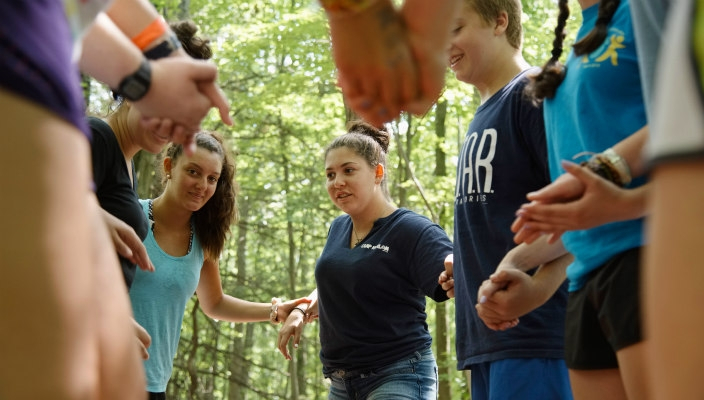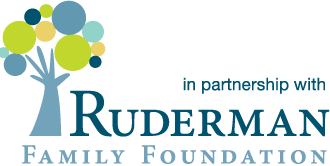A Change Would Do You Good: How URJ Camp Harlam is Leading the Way in Camper Inclusion
02/14/2019
I didn’t read Leading Change by business guru and Harvard professor John Kotter until after I’d already tried, countless times, to initiate and manage institutional change. Bumping into the walls of change management (such as failing to create a sense of urgency or declaring victory too soon) was my way of learning by doing, and despite the frustrations that came with that trial-by-error approach, I arrived at URJ Camp Harlam in 2011 with enthusiasm to help a venerable organization fortify its outstanding reputation. I was highly motivated and believed this reclamation effort would only take me a few years.
In the 25 years since I entered the field, metrics to assess the performance of residential summer camps haven’t changed much: enrollment, retention, net surplus. This is where the challenge at Harlam showed itself.
We knew Harlam needed a change, but there was no objective crisis in our numbers. Enrollment was up and down but concerning only by the highest standards. Camper retention rates also were lower than desired, but with active registration of new campers each year, these rates didn’t have an adverse effect on the bottom line. And financially, Harlam was stable.
In the absence of some of the low-hanging fruit a new leader might normally have the chance to feast on in their earliest days, I set off for my first summer on-site to try to better understand where to focus my change efforts.
For multiple generations, campers at Harlam had thrived. Each group or unit was full of smiling faces, and the young adults caring for them exuded a sense of spirit and commitment to camp. Upon closer observation and inquiry, though, there was a problem: The retention numbers that showed an average of only 7 of 10 age-eligible campers coming back each season were, indeed, an important indicator of something I was now understanding on a deeper level.
Harlam had unintentionally become an environment that catered to the typical child, the strong child, the social child, or the more independent child – while the child who needed more personal attention or support in order to succeed was sometimes left to fend for themselves.
Kids that did well were “camp kids;” children that didn’t do well were labeled as “not meant to go to camp.” There were examples of exceptional success at working with these unsuccessful outliers, those cases appeared to be dependent on the presence of an especially talented staff member or supportive peer who contributed to success – not the evidence of an institutional ethos that elevated the care of campers to be truly equitable.
The situations in which children’s mental, emotional, or social health (MESH) was being effectively considered and addressed were not consistently managed nor replicable, and despite having wonderful children surrounded by wonderful staff members, an overall failure in approach and systems was having measurable impact. We knew from our teachings that we were to, “Guard yourself and guard your soul very carefully” (Deuteronomy 4:9,) but our efforts weren’t meeting our aspirations.
On opening day, children step into camp as already extraordinary. They possess all sorts of skills, talents, and dreams, and – though we know they are still developing and will need help – we sometimes misunderstand our role. We are not in the child repair business, but one of care. The idiosyncrasies, behavior, and abilities that make every child unique are for our institutions to nurture and lift up, and – where necessary and possible – we should recognize, compliment, and support.
In 2011 and more clearly each year since then, we see that children arrive at camp with more than bathing suits and sunscreen packed in their duffels; they bring their fears and trauma, too. With these newfound realizations, we needed to make a shift at Harlam to ensure that our outstanding community, program, and organization could continue to build on its foundation as a haven for Jewish continuity and personal growth.
The change process that ensued has led to our camp being known for its “Open and Safe” commitment rather than “survival of the fittest.” With the leadership and expertise provided by Harlam professionals such as Lisa David, Cori Miller, and Lori Zlotoff, the reiterate process of experimentation and improvement has helped our camp develop a more authentically inclusive community – and has included moments of awe and inspiration that I had not yet seen in my career. While Kotter’s research and theory have since become fundamental to me as a leader, the evolution in Harlam’s identity is a process more aligned with a strategy outlined by Jim Collins in Built to Last: establishment of a “Big Hairy Audacious Goal.” Our “BHAG” – creating a whole and just community where campers and staff can feel safe, supported, protected, and challenged to grow – has been transformational for us.
Our organizational change process has reached beyond summer programming to influence our entire agency, as well as our partners. In the last year, we’ve convened educational experiences to share our learning and offer camp as a classroom; led Mental Health First Aid Training for Youth events with congregational professionals, educators, and clergy (two Harlam leaders have earned certification in this eight-hour certification course); and even helped to inspire the coming launch of a URJ Camp network-wide project (the Briut Initiative) to underscore and enhance the work of supporting the MESH needs of campers and staff.
The lesson we’ve learned is that Harlam is healthier because we opened ourselves up to and held ourselves accountable for making a change. Although it’s been difficult, we would never go back to the way it was before.
February is Jewish Disability Awareness, Acceptance, and Inclusion Month (JDAIM), a unified initiative to raise disability awareness and support efforts to foster inclusion in Jewish communities worldwide. The Union for Reform Judaism is proud of its Presidential Initiative on Disabilities Inclusion, an ongoing effort to ensure full inclusion and participation of people with disabilities in every aspect of Reform Jewish life. Visit the Disabilities Inclusion Learning Center to learn more.

